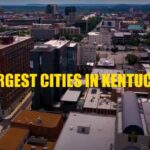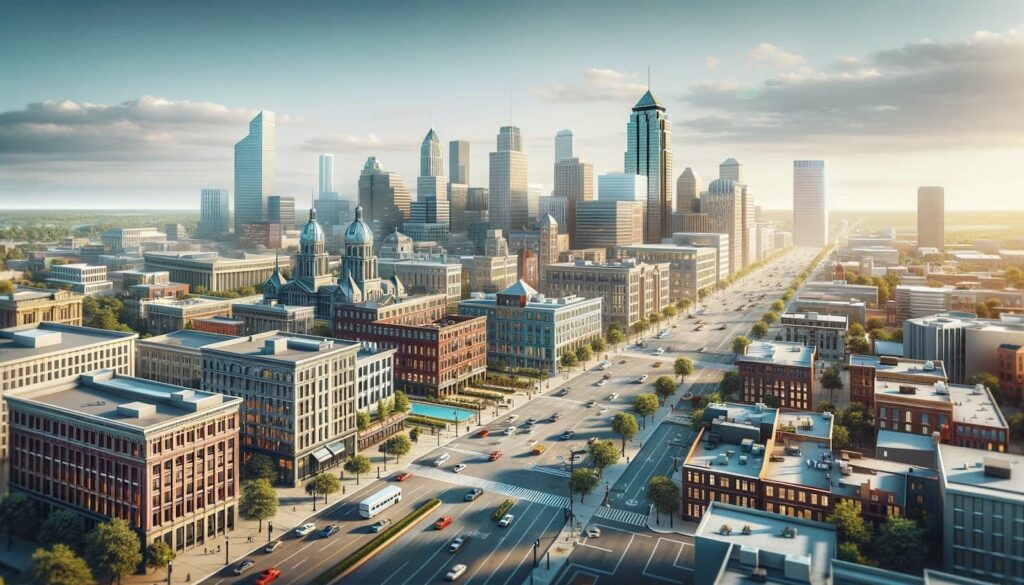
Kansas, nestled in the American Midwest and known as the Sunflower State, boasts diverse landscapes, a rich cultural heritage, and a unique city structure. With a landmass of over 211,754 square kilometers, it ranks as the 13th largest state in the United States. Despite its vast expanse, Kansas is home to approximately 2.8 million residents, making it the 34th most populous state in the country. The state’s urban centers are a blend of history, modernity, and community spirit. This article delves into the ten largest cities in Kansas, shedding light on their population, significance, and contributions to the state’s vibrant tapestry.
1. Wichita, Kansas – 400,564 People
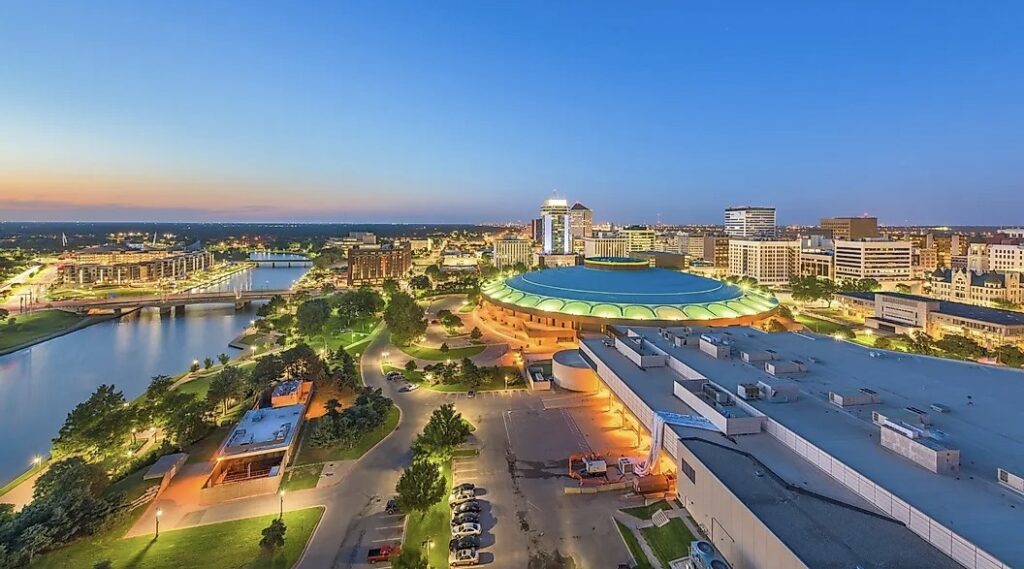
A Hub of Culture and Commerce
Wichita, located in south-central Kansas, stands as the state’s largest and most populous city. It serves as a vibrant hub of culture, commerce, and innovation. The city’s rich history is intertwined with its modern identity, offering a compelling mix of tradition and progress. Wichita’s economic significance is underscored by its status as the “Airplane Capital of the World,” a title attributed to its robust aviation industry. The city is home to the Dwight D. Eisenhower National Airport, the largest airport in Kansas, further solidifying its position as a key transportation and business center in the region.
Economic Landscape
Wichita’s economy is multifaceted, encompassing aviation, manufacturing, healthcare, and education. The city hosts major companies such as Spirit AeroSystems, Koch Industries, and Cargill, contributing significantly to its economic vitality. Moreover, Wichita’s strategic location at the confluence of major highways and railways enhances its role as a logistical and distribution center, fostering continued growth and development.
| Industry | Contribution to Economy |
|---|---|
| Aviation | Significant |
| Manufacturing | Key |
| Healthcare | Growing |
| Education | Prominent |
Cultural and Recreational Offerings
Beyond its economic prowess, Wichita boasts a rich cultural scene and a plethora of recreational opportunities. The city’s diverse arts and entertainment venues, including the Wichita Art Museum, Exploration Place, and the historic Old Town district, cater to a wide array of interests. Additionally, its expansive park system and outdoor amenities provide residents and visitors with ample opportunities for leisure and relaxation.
- Wichita Art Museum;
- Exploration Place;
- Historic Old Town district.
2. Overland Park – 202,012 People

Suburban Charm and Economic Dynamism
Overland Park, a prominent city in the Kansas City metropolitan area, embodies a perfect amalgamation of suburban charm and economic dynamism. As the second-largest city in Kansas, Overland Park has evolved into a thriving commercial and residential hub, attracting residents and businesses seeking a balance between urban conveniences and a tranquil lifestyle.
Economic Development
The city’s economic landscape is characterized by a robust corporate presence, with numerous national and international companies establishing their headquarters or regional offices within its boundaries. Overland Park’s business-friendly environment, coupled with its skilled workforce, has contributed to its reputation as a prime destination for corporate investment and expansion.
| Sector | Business Environment |
|---|---|
| Corporate | Strong presence |
| Technology | Growing prominence |
| Healthcare | Notable institutions |
| Retail | Flourishing |
Quality of Life and Community Engagement
Overland Park prides itself on offering an exceptional quality of life, underpinned by well-planned neighborhoods, top-rated schools, and an extensive network of parks and recreational facilities. The city’s commitment to community engagement is evident through its various initiatives aimed at fostering a sense of belonging and inclusivity among its residents.
- Well-planned neighborhoods;
- Top-rated schools;
- Extensive park system.
3. Kansas City – 158,771 People
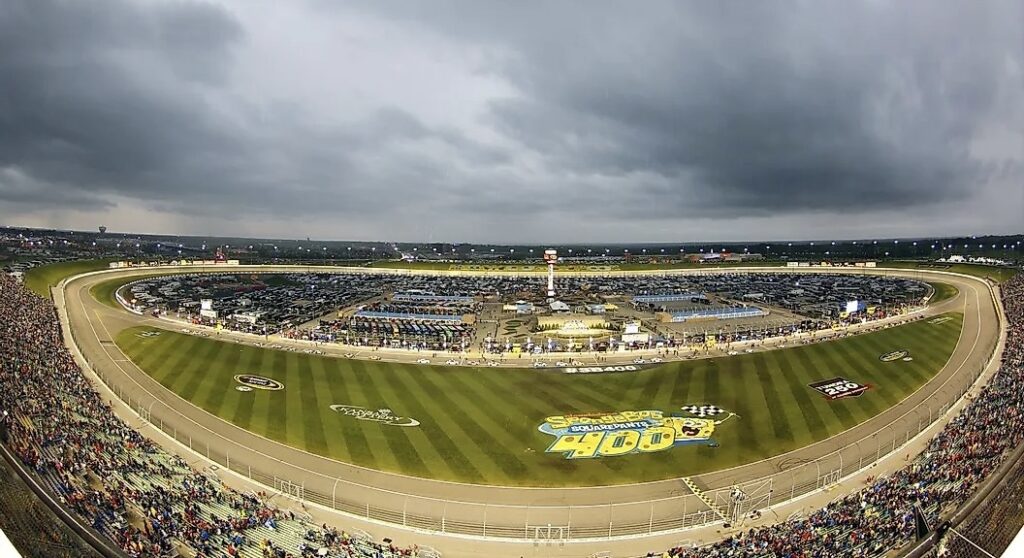
A Gateway to Opportunity
Kansas City, situated at the confluence of the Kansas and Missouri rivers, serves as a gateway to opportunity, offering a diverse range of experiences and prospects. As the third-largest city in Kansas, it holds a pivotal position as a cultural, economic, and logistical center, drawing in residents and visitors alike with its distinctive allure.
Economic Diversity
The city’s economic landscape is marked by its diverse industries, including telecommunications, healthcare, logistics, and professional services. Kansas City’s strategic location and robust infrastructure have facilitated the growth of various sectors, contributing to its status as a vital economic engine within the state.
| Industry | Economic Contribution |
|---|---|
| Telecommunications | Prominent |
| Healthcare | Growing |
| Logistics | Key player |
| Professional Services | Thriving |
Cultural Tapestry and Entertainment
Kansas City’s cultural tapestry is woven with a rich assortment of museums, performing arts venues, and culinary delights. The city’s jazz heritage, vibrant arts scene, and renowned barbecue culture add depth and character to its offerings, captivating both residents and tourists.
- Jazz heritage;
- Performing arts venues;
- Renowned barbecue culture.
4. Olathe – 144,374 People
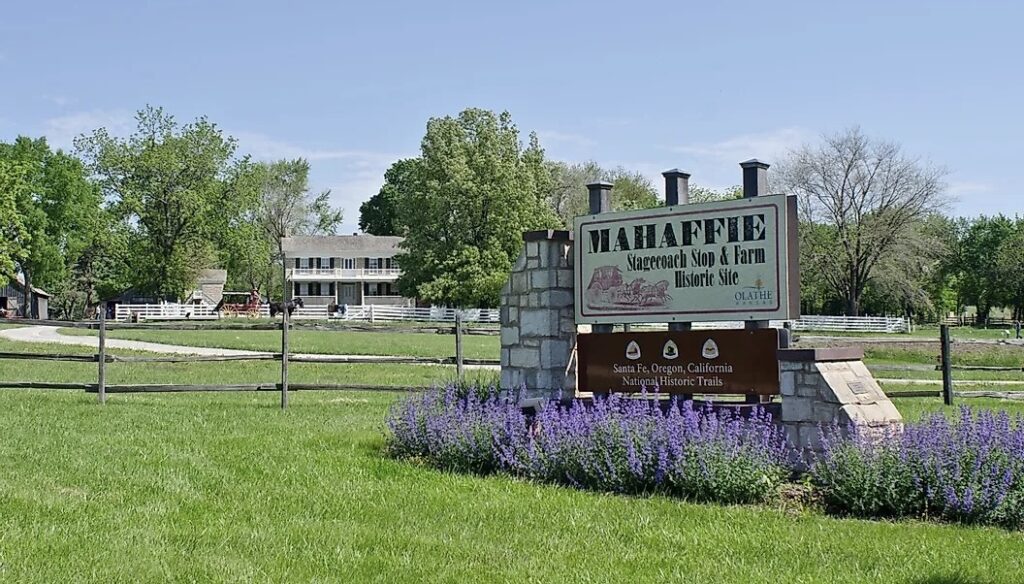
Suburban Serenity and Economic Resilience
Olathe, a city celebrated for its suburban serenity and economic resilience, stands as a testament to balanced urban development. As the fourth-largest city in Kansas, Olathe has cultivated a reputation for offering a tranquil living environment without compromising on economic opportunities and community amenities.
Economic Stability
Olathe’s economic stability is anchored by a diverse mix of industries, including technology, healthcare, and advanced manufacturing. The city’s strategic location within the Kansas City metropolitan area has facilitated the growth of these sectors, bolstering its economic resilience and sustainability.
Community Cohesion and Family-Friendly Environment
Olathe’s emphasis on community cohesion and family-friendly amenities is evident through its well-maintained parks, family-oriented events, and strong support for local businesses. The city’s commitment to nurturing a welcoming and inclusive environment has contributed to its appeal as a desirable residential destination.
- Well-maintained parks;
- Family-oriented events;
- Support for local businesses.
5. Topeka – 126,409 People
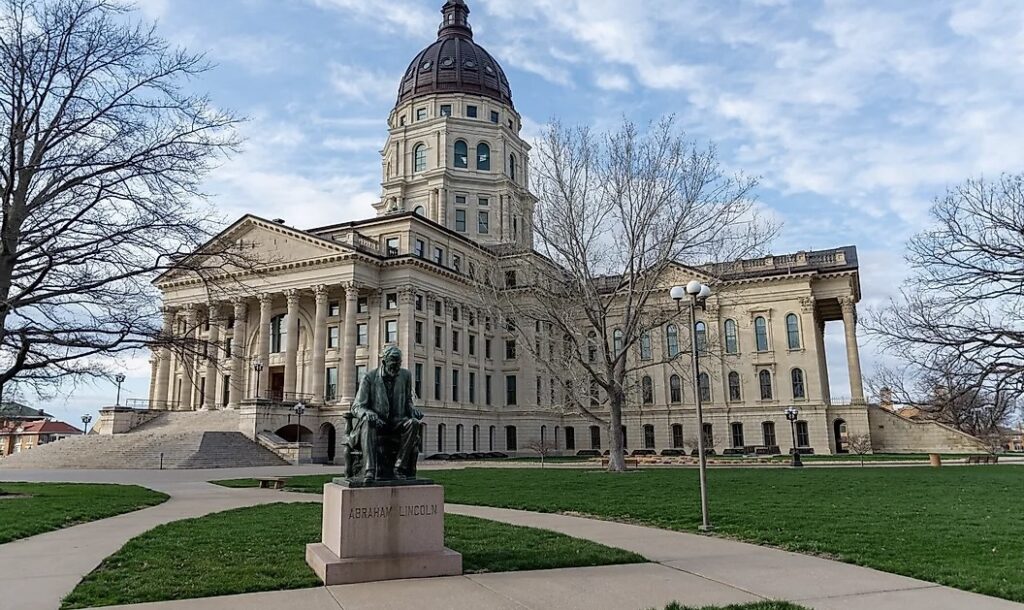
Capital City Legacy and Economic Progress
Topeka, the capital city of Kansas, carries a legacy of historical significance and economic progress. As the fifth-largest city in the state, it serves as a focal point for governance, commerce, and cultural exchange, embodying a blend of tradition and modernity.
Economic Advancements
Topeka’s economic landscape is characterized by a diverse array of industries, including government, healthcare, education, and manufacturing. The city’s strategic location and proactive economic policies have propelled its growth across these sectors, contributing to its stature as a key economic center within Kansas.
| Sector | Economic Influence |
|---|---|
| Government | Central to operations |
| Healthcare | Notable institutions |
| Education | Prominent |
| Manufacturing | Sustained growth |
Cultural Heritage and Civic Engagement
Topeka’s cultural heritage is preserved through its museums, historical sites, and annual events that celebrate its rich history. The city’s commitment to civic engagement is evident through its various community programs and initiatives aimed at fostering a sense of pride and unity among its residents.
- Museums;
- Historical sites;
- Annual events.
Kansas Population Charts
Kansas city growth per year from 1900 to the present.
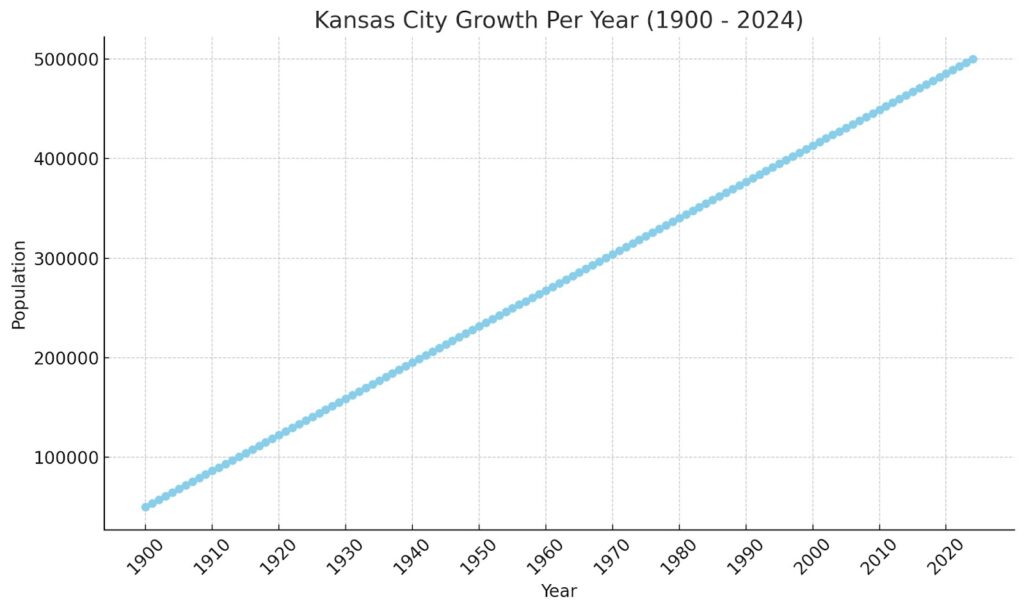
Kansas Population Size vs All 50 States
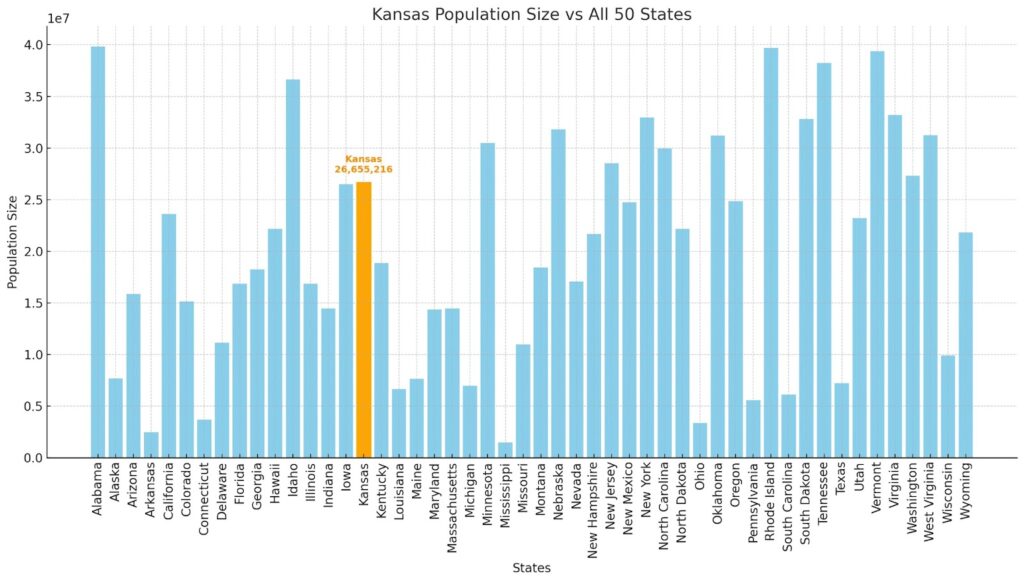
Conclusion
The largest cities in Kansas represent a tapestry of economic vitality, cultural richness, and community spirit. Each city’s unique blend of history, modernity, and urban amenities contributes to the state’s diverse urban landscape, offering residents and visitors a myriad of experiences and opportunities. From the bustling streets of Wichita to the suburban tranquility of Olathe, these cities stand as testaments to the dynamic and multifaceted nature of urban life in Kansas. As they continue to evolve and thrive, they play an integral role in shaping the state’s identity and progress, embodying the spirit of the Sunflower State.
Last modified: February 28, 2024

